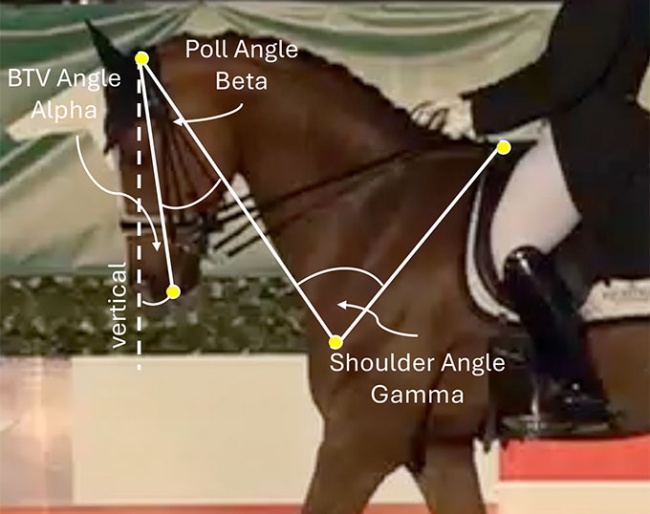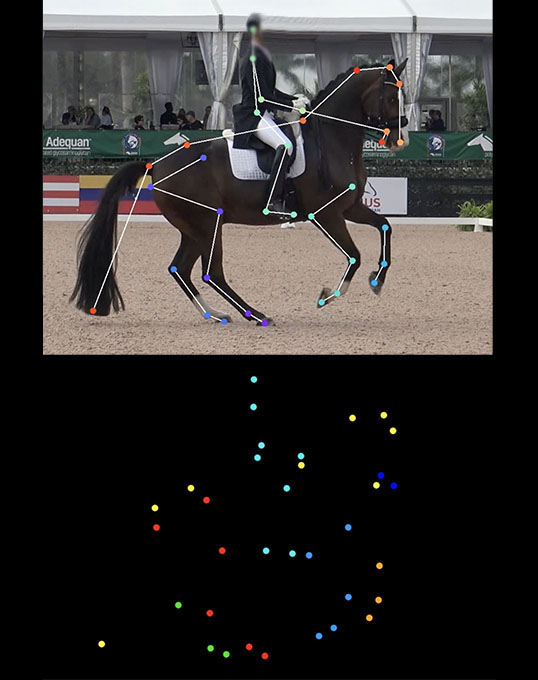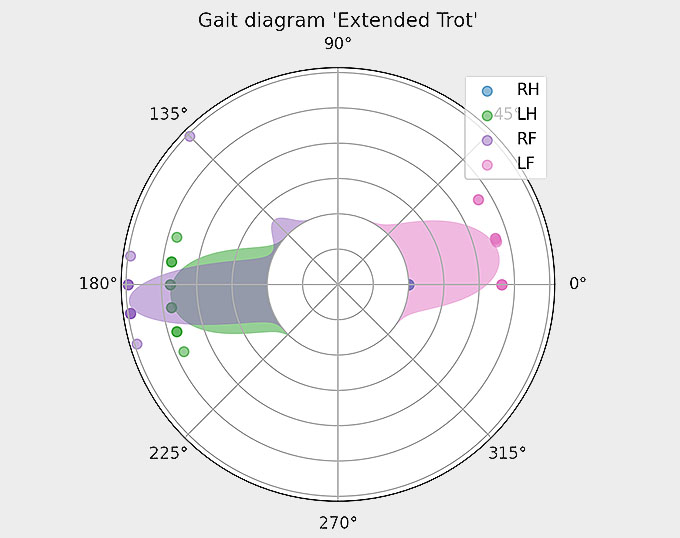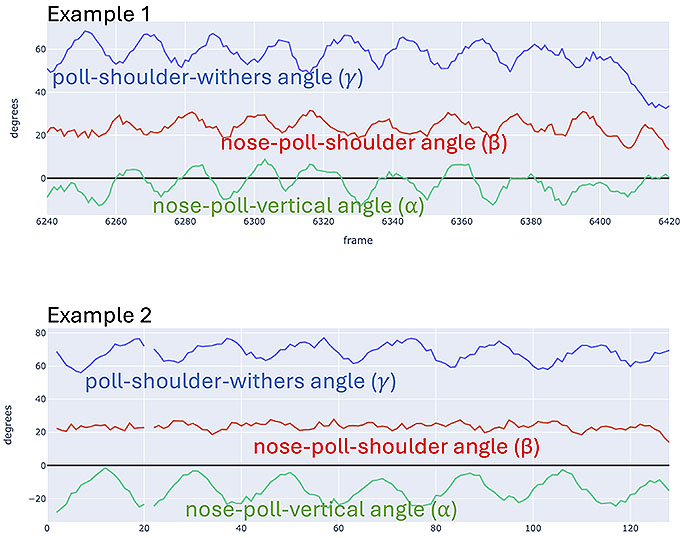
-- by David Stickland
Our entire community is aware that Equine Sport as an Olympic discipline is under extreme pressure and unless change is brought about, we could risk that Dressage is removed from the Olympic and Paralympic Games.
We watched some beautiful Dressage in Paris, and I would say the Para Equestrian games were an even more impressive demonstration of the bond between horse and rider. The very cornerstone of Dressage is the humane treatment of our equine partners, and the majority of riders care deeply for their horses and would never consciously treat them badly. However, there have been enough examples, both real and misinterpreted, of inappropriate behavior, that we have to face this reality and address it in an open and honest way..
Judges Can Achieve Rapid Change
Practically speaking the only group that can quickly and convincingly achieve change are the judges – if they were to coherently and precisely censor any and every example of inappropriate riding, the behavior of riders and trainers would change immediately.
Judging is however extremely complex and it takes many years for our top judges to achieve that expertise. It is perhaps as important for all levels of judges from the local riding club event to the Olympics to all be able to accurately judge their level correctly, to encourage good behavior and discourage bad behavior.
Education is critical, for riders, trainers and judges. We can use technology to help in many of these tasks; to allow the rider both at home and on competition to receive coherent feedback with which to improve their skills and with which to train their horses to get the very best from them with the welfare of the horse being paramount. And we can do this in a way that is objectively measurable and scientifically sound so we can be sure it is understandable by our critics and so that it can be applicable worldwide.
How can Technology help?
For many years I have performed analysis of Dressage judging trying to understand what the limitations of the methods are and trying to give the best possible feedback to our judges and our federations. I also had the honor to serve on the FEI Dressage Judging Working Group (DJWG).
I have used statistical analysis to support the introduction of half-points, to push for an expanded jury of 7 judges in the highest level events, to reduce the influence of the collective marks in the final results and to draw attention to the very heavy mental load we place on our judges to not miss a single thing and assign scores about once every ten seconds in a Grand Prix test, and sometimes for many hours in a day.
In recent years I have become convinced that video analysis using artificial intelligence, or AI, can help. This is nothing more than using modern technology to help our understanding of what is happening in the Dressage Arena or at home in training. We should not try to replace our judges but give them better tools to perform many of the repetitive observations and characterizations. Then, they can concentrate more on the big picture – such as the subtleties of harmonious riding. To that end, after some years of researching the tools and methodologies and developing proof of principle models of how such tools would work, then together with like-minded colleagues I have founded a startup company Global Equestrian Technology (GET BV) based in Belgium. I bring my experience as a research physicist, data analyst and knowledge of international Dressage; Eddy Schuurmans brings his knowledge as a horse breeder and trainer together with his commercial expertise as CEO of SoccerLAB software for major European soccer clubs; and John van de Laar brings his business experience in both top level Jumping and Dressage competition organization.
Modern Video Analysis
We started from the conviction that modern video analysis tools are all we need, with no need to attach sensors and the such-like to horse or rider. There is a place for that technology but not in the competition arena and not in most stables. The basic truth is that building on the tools that have become available, it is quite possible to both track a horse around a dressage arena and more importantly, to track the motion of the key skeletal points. An example of this for a full Dressage test can be seen here.
With a basic smart phone or similar camera it is straightforward to record video at 60 or more frames per second (fps). Once the software is properly trained we can already track 50+ points on the horse and rider with typically 16 milliseconds between frames. Even at a 20 km/hour canter the horse moves about just 10 cm (about 1-2 pixels in a typical video frame) in that 16ms and at most Dressage paces of walk, trot, passage the resolution is even better.

We don’t pretend that the camera or the software know the finer details of Dressage of course, but that the software can be trained to measure what we call the observables and with time the software can also be trained to correlate its measurements of those observables with what our best judges assign by way of movement scores.
Pace Analysis
Our initial developments have been based on pace analysis – automatic detection of the pace by the rhythm of the four limbs. This does not just identify that for example the horse is at a walk but also the regularity of that walk, its non-laterality, and its over-track distance. The biggest difficulty is not in the measuring these characteristics of every step in the test but in deciding how to filter this wealth of information and present it to the judge.
Just consider some of the simplest examples that those of you that have judged or scribed know can be issues in the judge’s cabin:
- How far did the horse move forward in the 12 best Piaffe steps?
- Were there the right number of changes in the One Tempi?
- How many times and on which steps were the hind legs together in the changes?
- How many steps were there in the rein-back?
- What was the diameter of the circle described by the hind legs in the Pirouette?
- How big and how consistent was the over-track in the Extended Walk?
- How evenly spaced in time were the walk steps of each limb?
- How much time in the movement or the whole test was the horse “behind the vertical”?
These are some of the most basic packets of information we could feed to the judges in real time. As the technology advances and the amount of data available for the training of the AI increases, more and more of this type of information will be accurately assessed and could be presented to the judge, to the public, or to the rider and trainer at home.
As an example of a Trot pace analysis see the following graphic that illustrates the observation of a clear two beat in an Extended Trot. These analyses are still work in progress. The first limb strike in the line is the Right Hind (RH) and we use that in each subsequent stride as the reference marker to start the cycle of the other 3 limbs in the stride – that is why the 11 RH strikes are shown as a single marker. One cycle of the graph (360 degrees) corresponds to one stride and in this example each stride takes 0.91seconds. The colored areas illustrate the distribution of strike times (phases) for each limb, in all 11 strides are summarized in the plot:

On closer inspection we see that in this case the Left Fore (LF) almost always comes down slightly later than the RH on each step, although in fact in one stride the four limb strikes were perfectly aligned on the 0 to 180 degrees central axis. The LH and RF come down almost exactly 180 degrees away from the LF (perfect two beat) for each stride. From analytic illustrations like this we can extract measures of the regularity of the beats in the pace and identify irregularities.
The benefits would be manifold. The system could effectively act as a Judging Supervisory Panel at smaller shows as it could signal lapses and outliers in the individual scoring and indicate what may have been missed. Judge training videos can be created using video-game type technology to transfer the skeletal points from actual rides to become anonymous video clips to illustrate every type of error. Showing data to the audience could make the experience of watching Dressage sport more interactive and understandable, as well as more educational for all involved. Etc.
The Revolution that Technology Can Bring to Dressage
We envisage that with only a mobile phone at home a rider could have clips of their training uploaded and have the analysis returned to them in seconds. They could track how a particular movement or exercise has progressed (hopefully!) each time they upload and they could receive totally objective and highly detailed analysis, not necessarily just a score but, even more than that, an analysis and feedback of all the components that add up to success with that movement.
Such tools will evolve with time, they can be trained to reflect what the majority of judges consider to be well performed Dressage; they don’t force the judges to judge in a particular way, but they literally learn from what the judges do. Most importantly they back up the judge with detailed scientifically based analysis that can be objectively assessed and is repeatable. That is the revolution that technology can bring to Dressage: to make the analysis of the sport as objectively measured as possible, to give athletes the possibility to have their horse and training assessed in the same way wherever they are in the world. Not to constrain the judges but to give them accurate data on which to base their decisions.
Welfare Issues
While by no means the only issue facing us, there has been much talk recently about “Behind The Vertical”, or BTV. Our observation is that this is not quite as simple as it may seem. The head of the horse may be slightly behind the vertical but if moving fluidly along with the poll this may not be a significant impediment to the horse or indeed a welfare issue at all. In our first examination of this we considered three angles as shown in the illustration at the top of the article, and not only the pol-nose line. By doing this and by including the duration of each situation we can come up with a much broader BTV index, which reflects much more accurately the real welfare of the horse.
Two examples are illustrated below. In Example 1 the head is slightly behind the vertical but moving synchronized with the neck and shoulder. In Example 2 the head is substantially behind the vertical and the neck angle is constantly small. The second example seems more stressful for the horse. It is of course up to the Dressage community to validate these kinds of examples and define how good or bad the measurements are.

What is the Current Status of this Technology?
GET is building its base of highly skilled experts to take this from the current development stage to being deployable by the time of the 2028 LA Olympics.
Time is of the essence to our sport, we must demonstrate to both our supporters and our critics that the community is ready to adapt, that it is ready to use technology that will clarify judging and will objectively put the welfare of the horse at front and center. This type of video technology offers both a path to a more understandable and objective sport, along with tools that can encourage responsible and humane riding.
GET has a detailed business plan that we are ready to discuss with potential investors and we have identified and received positive feedback from significant governmental support and funding that could match that of investors. We have demonstrated that this is all technically possible and that we have the effort and skills required to bring this to market, but we also need the help of a few Dressage supporters and investors willing to try something new with us, and in so doing to become part of a fundamental change in the way our sport is viewed and how it can defend itself and its position as an objectively measured international Olympic discipline.
Feel free to contact us at info@globalequestriantechnology.com